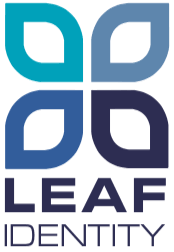Learning Center
Frequently Asked Questions
What is the LEAF Consortium?
The LEAF Consortium is an association of partner entities intent on bringing interoperability to the Access Control and Identity Credentials market and beyond.
What does LEAF stand for?
LEAF is not an acronym. It is merely the brand name chosen by the LEAF Consortium to help communicate the intent of interoperability.
What are the LEAF Standards?
The LEAF Standards are a set of specifications and reference designs for access control and identity credential components that facilitate interoperable, secure, and open choice by Security Managers and Solution Architects, so that LEAF Identity Credential user experiences are useful, easy, and delightful.
The LEAF specification is open and evangelized by a critical mass of users who seek high secure, interoperable solutions and who are no longer tolerant of proprietary products.
What are LEAF Enabled Products?
LEAF Enabled products are those that are certified to be interoperable when paired with other similar products that are configured with LEAF Cc keys. A security solution built on LEAF Enabled products guarantees that a user can share their LEAF identity anytime, anywhere, and across applications.
What are LEAF Access Readers?
All LEAF access readers are configured to access (read, and sometimes write) to a standard data model and Access Control Data(ACD) that identify them as being LEAF Enabled and come in several form factors: smart cards, keyfobs, mobile phones, etc. Enabling readers to read and write LEAF Credentials is easy!
What are LEAF Identity Credentials?
All LEAF Identity Credentials reflect a common Access Control Data structure (ACD) that identify them as being LEAF Enabled and come in several form factors: smart cards, keyfobs, mobile phones, etc.
What is the LEAF Data Structure?
The LEAF data structure was designed to leverage the extensive flexibility of an EV2 credential and serves as the basis for LEAF's protocol when enabled products need to communicate.
Who is behind LEAF?
The LEAF initiative was conceptualized by Hugo Wendling in order to develop a viable data structure and protocol around which LEAF Enabled products and credentials can share information. Hugo is a firmware, DSP and cryptographic engineer with extensive radiofrequency telecommunication and cryptography experience. Hugo’s experience designing firmware radios, cryptographic algorithms, and security management systems, provides the basis for his passion, which is to enable the security industry to work harmoniously to develop highly secure, but compatible and interoperable solutions.
What are the common barriers to adopting LEAF?
As a manufacturer of RFID devices, you must adopt the specification and incorporate the recognition of the LEAF data model into your devices. There are no license fees.
As a Manufacturer of LEAF Identity Credentials, you must adopt the LEAF specification and program the data structure into a DESFire EV2 card. If you are a card manufacturer and wish to program LEAF Cc keys for your customer, you must prove you are qualified to program the LEAF data structure into the card, and then you must be trusted by the end-user to program their LEAF Cc keys.
Why are Proximity Cards not secure?
Proximity Cards are not encrypted and are easy to clone using off the shelf card read/write devices for under $25.
Learn More:
- Risks around Prox/Wiegand (YouTube)
- Hacked in 60 Seconds: How Legacy Wiegand Exposes Modern Access Control
DEVELOPING LEAF PRODUCTS IS EASY!
Your products can be fully compatible with LEAF credentials in a matter of hours! Any smart card reader can become compatible with LEAF by implementing a simple firmware update.
Technical Specifications
Supporting Documentation
- AN10922: NXP Symmetric Key Diversifications (PDF)
- AN10957: NXP Generic Access Control Data Model (PDF)
Need Help? We're happy to assist in any way we can!
